|
Introduction of Fushimi
Where is Fushimi?
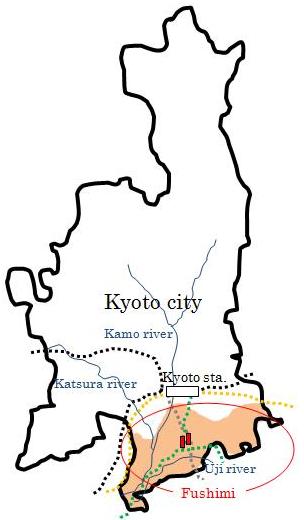 Fushimi is an area that lies to the south of Kyoto city. There are various sightseeing spots like Fushimi Inari shrine, Fushimi is famous for sake breweries. In Fushimi, sake brewing developed because of its good spring water and water transportation. In Fushimi there are not only historical places like Teradaya and Ryoma dori but also places related to sake.
Fushimi is an area that lies to the south of Kyoto city. There are various sightseeing spots like Fushimi Inari shrine, Fushimi is famous for sake breweries. In Fushimi, sake brewing developed because of its good spring water and water transportation. In Fushimi there are not only historical places like Teradaya and Ryoma dori but also places related to sake.
1.From Kyoto station
Take the express or local train of Kintetsu Kyoto Line.
Get off at Momoyama-goryo-mae station.
It takes about fifteen mitnutes.
Fee: 250 yen
2.From Sanjo station
Take the limited express of Keihan Line to Yodoyabashi.
Change to local trains at Tanbabashi station to Yodoyabashi.
Get off at Fushimi-momoyama station.
It takes about twenty minutes.
Fee: 260 yen
Where to visit in Fushimi?
A map of Fushimi within about one square kilometer.
Show you attractive sites/restaurants in Fushimi numbered in the map. Enjoy Fushimi, home of sake breweries!
1. Chokenji temple
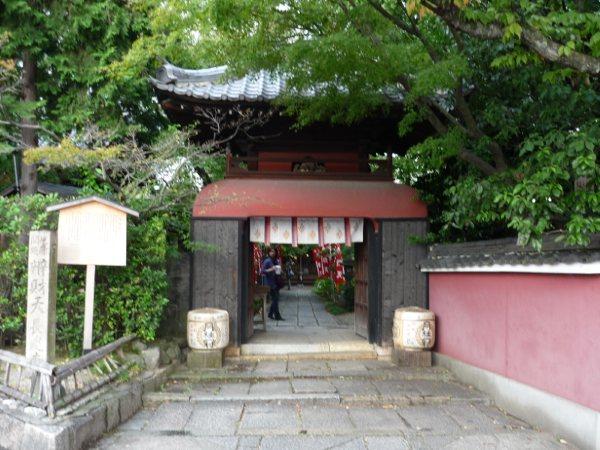 The temple is also called shima-no-benten. There are beautiful crimson-colored earthen walls and a Chinese-style gate that looks like the palace of the sea goddess here.
The temple is also called shima-no-benten. There are beautiful crimson-colored earthen walls and a Chinese-style gate that looks like the palace of the sea goddess here.
2.Fushimi-yumehyakusyu
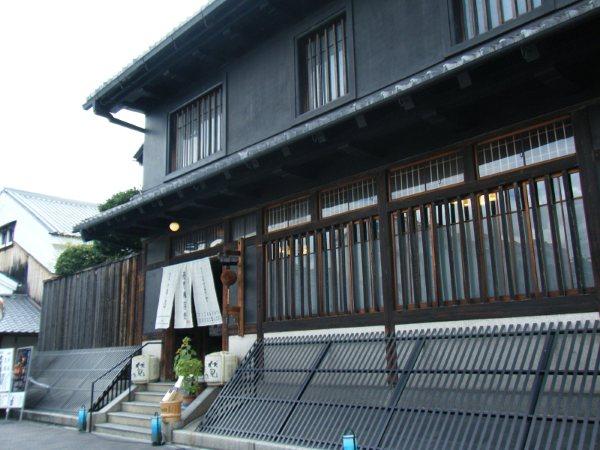 You can buy souvenirs of Fushimi such as sake, sake sponge cakes, and sake buns of Fushimi. You can also get a tourist brochure of Fushimi and taste sake here.
You can buy souvenirs of Fushimi such as sake, sake sponge cakes, and sake buns of Fushimi. You can also get a tourist brochure of Fushimi and taste sake here.
OPEN Tue.-Fri.:11:00-17:00 Holidays:10:30-18:00, CLOSED Mondays
[TEL]075-623-1360
3.Gekkeikan-okura-kinenkan
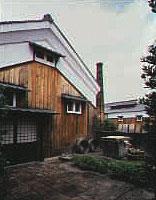 More than 400 tools for sake making are preserved and exhibited here. You can see the process of sake making, taste sake, and drink tasty water used for sake making, too.
More than 400 tools for sake making are preserved and exhibited here. You can see the process of sake making, taste sake, and drink tasty water used for sake making, too.
OPEN 9:30-16:30
Fee: 300 yen
[TEL]075-623-2056
4.Kizakura-kappa-country
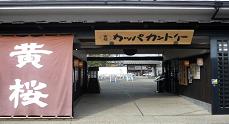 You can try sake for 100 yen, and buy bottled sake as souvenir.
You can try sake for 100 yen, and buy bottled sake as souvenir.
OPEN 10:00-20:00
[TEL] 075-611-9919
5.Teradaya
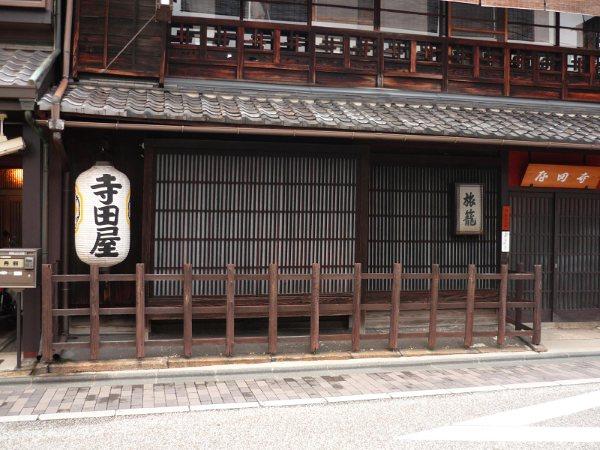 Fushimi prospered as a river port in Edo era (1603-1868). Teradaya was a ship hotel where the guests who traveled by the ship stayed. Leaders of political movements at the end of Edo era gathered here. The admission of Teradaya is 400 yen.
Fushimi prospered as a river port in Edo era (1603-1868). Teradaya was a ship hotel where the guests who traveled by the ship stayed. Leaders of political movements at the end of Edo era gathered here. The admission of Teradaya is 400 yen.
6.Ju-kkoku-shu ship
7.Sanju-kkoku-shu ship
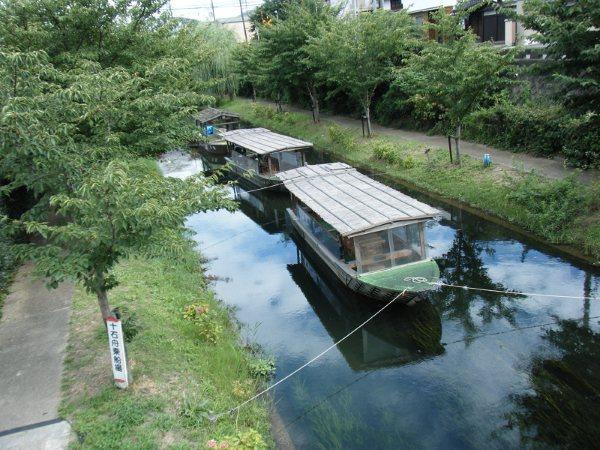 The ships carried travelers between Osaka and Fushimi in Edo era. You can still enjoy a river trip. The fee of the ship is 1,000 yen. One trip takes forty to fifty minutes.
The ships carried travelers between Osaka and Fushimi in Edo era. You can still enjoy a river trip. The fee of the ship is 1,000 yen. One trip takes forty to fifty minutes.
Business hours change with seasons.
Check the time table in advance at [TEL]075-623-1030
8.Fushimizu water
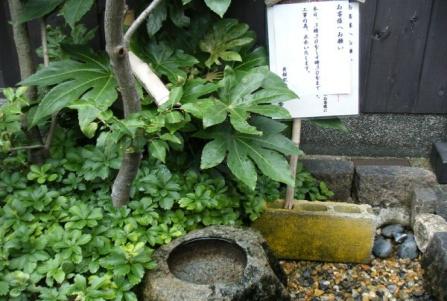 Fushimizu water is rich underground water that has not changed for a long time, and has been an essential to ingredient of Fushimi sake. Enjoy fresh taste of spring water at Kizakura-kinenkan (4).
Fushimizu water is rich underground water that has not changed for a long time, and has been an essential to ingredient of Fushimi sake. Enjoy fresh taste of spring water at Kizakura-kinenkan (4).
9.Gokounomiya shrine
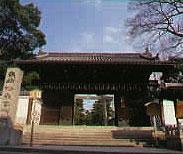 Fresh water springs in the shrine. Because the water is flavorful, the water was named Gokosui, meaning water with good aroma, by the Seiwa emperor in Heian erea (794-1192).
Fresh water springs in the shrine. Because the water is flavorful, the water was named Gokosui, meaning water with good aroma, by the Seiwa emperor in Heian erea (794-1192).
Gokosui water
 Gokousui water is very mild and indipensable for sake making of Fushimi. A lot of people take it home in plastic bottles for cooking.
Gokousui water is very mild and indipensable for sake making of Fushimi. A lot of people take it home in plastic bottles for cooking.
10.Kin-un-shimizu water
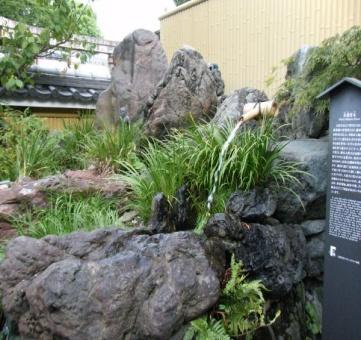 The water is believed to bring prosperity as well as fortune to the visitors and their descendants. Drink this water and be a rich.
The water is believed to bring prosperity as well as fortune to the visitors and their descendants. Drink this water and be a rich.
11.Sakamizu water
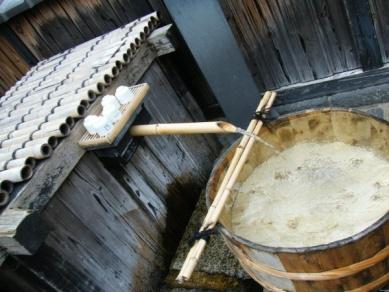 Sakamizu water is mysterious water that tastes like sake. Interestingly, it is so tasty that it was called Sakamizu water, meaning “sake-like water."
Sakamizu water is mysterious water that tastes like sake. Interestingly, it is so tasty that it was called Sakamizu water, meaning “sake-like water."
12.Shiragikusui water
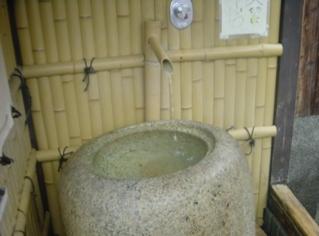 Shiragikusui water is on the side of Torisei (16). Shiragikusui water has a good scent so brewers use this water for sake making.
Shiragikusui water is on the side of Torisei (16). Shiragikusui water has a good scent so brewers use this water for sake making.
16.Torisei 17.Tsuki-no-kurabito
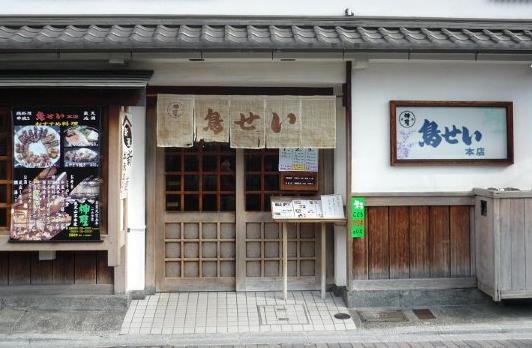 
Many travelers from overseas also drop in these Japanese taverns. Also, you can buy bottled sake.
16.Torisei
OPEN Tue.-Sat.:11:30-23:00,Holidays:11:00-23:00 CLOSED Mondays
[TEL] 075-622-5533
※English menu is available.
17.Tsuki-no-kurabito
OPEN 11:00-23:00 [TEL] 075-623-4630
※Menu is Japanese only.
Budget
Lunch: about 1,500 yen
Dinner: about 3,000 yen
Other restaurants where you can eat/drink sake!
13.Moromine (もろみね)
14.Asada (あさだ)
15.Aburacho (油長)
18.Kyogoku-ya (京極屋)
History and Attractions of Fushimi
Fushimi is a very attractive place. As the map shows, there are a lot of interesting places related to sake. This section helps you to understand the relations of Fushimi and sake, introducing some of Japanese historical events and episodes.
From the beginning, Fushimi has been blessed by high quality natural water, meisui. Meisui is essential component for good sake. So, Fushimi became one of the major sake producing areas and there were about 100 breweries in early Edo era. Then, however, sake in Fushimi had to undergo a lot of hardships.
First, sales of sake produced by sake breweries in Fushimi were prohibited in Rakuchu (洛中), central area of the Kyoto City, by the law. During Edo era, Fushimi was not thought Rakuchu. The sake market in Fushimi was restricted by the law and this gave economic damage to sake breweries in Fushimi. Second, Fushimi sake was challenged by the new breweries of the nearby areas which had been the markets of Fushimi sake. Not only did it become more difficult for Fushimi breweries to sell their sake in the nearby areas where Fushimi had enjoyed monopoly, but sake produced by new breweries rushed into Fushimi. Finally, the Battle of Toba-Fushimi (1868) gave sake industries a finishing stroke. This battle was fought between Tokugawa shognate and the imperial court. The town was burnt down and people were killed. For these reasons, breweries in Fushimi had greatly suffered and there survived only two breweries in late Edo era.
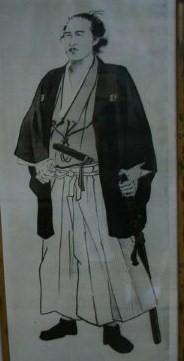 Fushimi seems to have been an important place in terms of modernization of Japan. The Battle of Toba-Fushimi is a historical turning point of the process from Edo era to Meiji era, which is usually called meiji-ishin (the Meiji Restoration). At that time, Ryoma Sakamoto, a reformer, strived to bring Japan into a modern country. He is like a shooting star on the eve of Meiji Restoration and was attacked and nearly killed by assassins in Fushimi. On the night of March 8, 1866, he was staying at Teradaya Inn and assassins attacked him while he lowered his guard. He counterattacked them by a pistol which was rare at that time and barely escaped. Now, at Teradaya you can see a lot of historical materials. There is no “If” in history, but if he had been killed there, there would be no present Japan. (Photo taken buy Miyuki Takahashi at Teradaya on August 7, 2009.)
Fushimi seems to have been an important place in terms of modernization of Japan. The Battle of Toba-Fushimi is a historical turning point of the process from Edo era to Meiji era, which is usually called meiji-ishin (the Meiji Restoration). At that time, Ryoma Sakamoto, a reformer, strived to bring Japan into a modern country. He is like a shooting star on the eve of Meiji Restoration and was attacked and nearly killed by assassins in Fushimi. On the night of March 8, 1866, he was staying at Teradaya Inn and assassins attacked him while he lowered his guard. He counterattacked them by a pistol which was rare at that time and barely escaped. Now, at Teradaya you can see a lot of historical materials. There is no “If” in history, but if he had been killed there, there would be no present Japan. (Photo taken buy Miyuki Takahashi at Teradaya on August 7, 2009.)
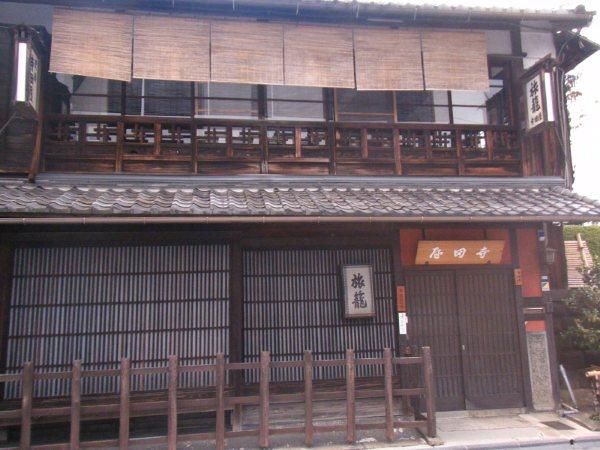 In early Meiji era, sake in Fushimi was called bachigaisake (場違酒) that means “not good sake.” However, breweries in Fushimi carried out various unique projects and came back strong as a major production area of sake during Meiji era. For example, while they kept hiring toji who had control over the process of brewing, brewers in Fushimi started to employ college graduates who joined the process of brewing as novice workers. Also, to improve the quality of sake, “Institute of Fushimi Sake Brewers Association” was founded. Member of this association succeeded in creating sake without preservative which had been used in sake making. For this and other achievements, Fushimi sake had been awarded gold prize many times at the “National Sake Fair.”
In early Meiji era, sake in Fushimi was called bachigaisake (場違酒) that means “not good sake.” However, breweries in Fushimi carried out various unique projects and came back strong as a major production area of sake during Meiji era. For example, while they kept hiring toji who had control over the process of brewing, brewers in Fushimi started to employ college graduates who joined the process of brewing as novice workers. Also, to improve the quality of sake, “Institute of Fushimi Sake Brewers Association” was founded. Member of this association succeeded in creating sake without preservative which had been used in sake making. For this and other achievements, Fushimi sake had been awarded gold prize many times at the “National Sake Fair.”
After WWII, Japanese economy was badly hit by the depression, and breweries in Fushimi were no exception. During the Showa 30s (1955-1964) because of Japan’s economic recovery the production of sake in Fushimi increased more and more. Then, a member of Fushimi Sake Association invented a new way of brewing which replaced the traditional one. In the past sake could be brewed only in winter, and this old method is called kandukuri. but today it can be brewed at any time of the year with a new method shiki-jozo (四季醸造), which means “brewing all the year round.”
Because of the rapid economic growth from Showa era to Heisei era (1989- ), the number of toji, skilled brewery masters working only in winter, has been decreasing slowly. Many sake makers who owned sake cellars were using the traditional systems of brewery in Japan, however, and they needed to employ toji who could brew sake in this old way. As a result, many breweries found it difficult to produce sake, and some of them even lost the traditional brewery skills. In Fushimi, as seen above, the brewing makers have employed a lot of regular workers for brewing since Meiji era. So they can produce Japanese sake without worrying about the shortage of “toji”.
Reference: Fushimi Sake Brewers Association (2001),
The 125-year History of Fushimi Sake Brewers Association.
|